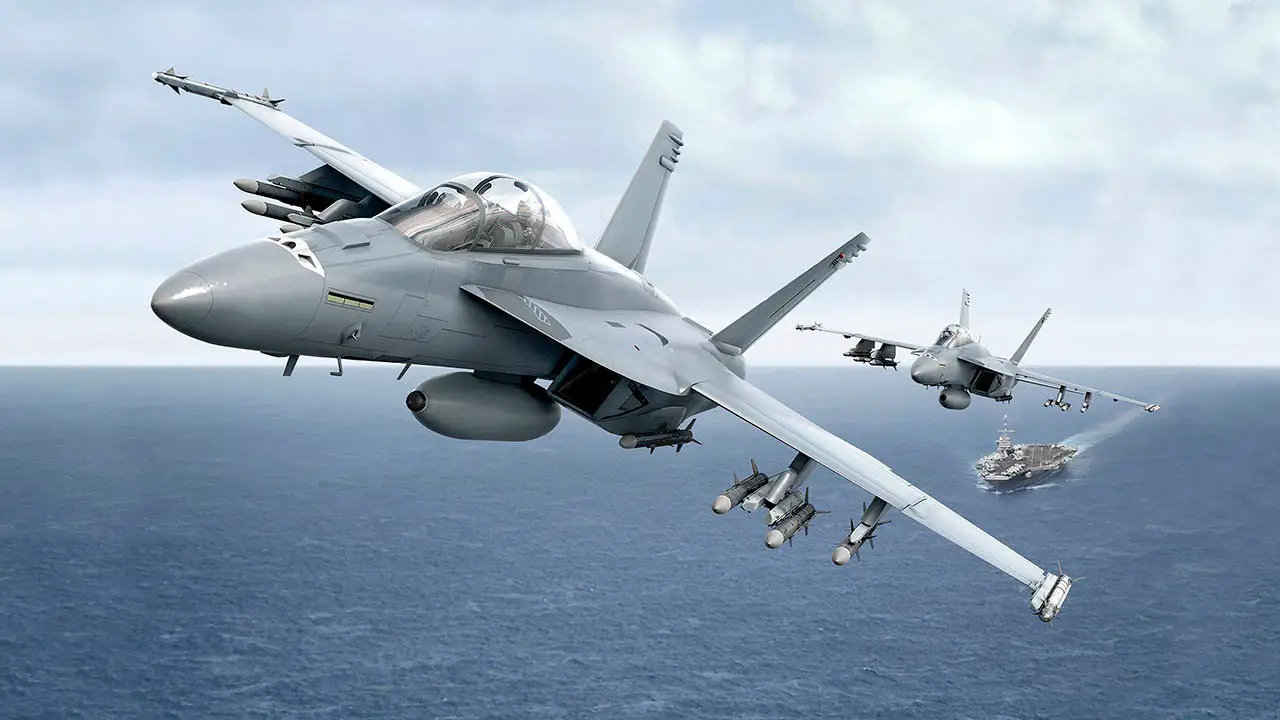The U.S. Navy awarded The Boeing Company a $1.3 billion contract March 19 for the purchase of 17 F/A-18 Super Hornet Block III jet fighters and delivery of a technical data package vital to the sustainment of the platform. The Navy received appropriated funds from Congress to purchase these Super Hornets to help mitigate the strike fighter shortfall. The award is an Undefinitized Contract Action with the intent to definitize within the next few months. Delivery of the new Super Hornets is scheduled to begin in the winter of 2026, with final delivery no later than spring 2027. The Boeing F/A-18E and F/A-18F Super Hornet are a series of American supersonic twin-engine, carrier-capable, multirole jet fighters derived from the McDonnell Douglas F/A-18 Hornet, in service with the armed forces of the U.S., Australia, and Kuwait. The F/A-18E single-seat and F/A-18F tandem-seat variants are larger and more advanced versions of the F/A-18C and D Hornet, respectively.
“I am very proud of our team; their mission-focused mindset, data-driven approach and persistence resulted in an agreement that will greatly benefit the sustainment of the Super Hornet and Growler aircraft well into the future. It is our job to ensure our warfighters have all the necessary resources to defend our nation and return home safely,” said Capt. Michael Burks, Program Manager for the F/A-18 and EA-18G Program Office.
“The technical data package was a crucial part of this negotiation; it is necessary for naval aviation’s operational readiness and post-production sustainment. The Super Hornet remains a predominant aircraft in the carrier air wing and will continue to provide significant combat capability into the 2040s,” said Rear Adm. John Lemmon, Program Executive Officer for Tactical Aircraft Programs.

The Block II Super Hornet incorporates an improved active electronically scanned array (AESA) radar, larger displays, the joint helmet mounted cueing system, and several other avionics replacements. In 2010, Boeing offered prospective Block III customers the “International Roadmap”, which included conformal fuel tanks, enhanced engines, an enclosed weapons pod (EWP), a next-generation cockpit, a new missile warning system, and an internal infrared search and track (IRST) system. The EWP has four internal stations for munitions, a single aircraft can carry a total of three EWPs, housing up to 12 AMRAAMs and 2 Sidewinders. The next-generation cockpit features a 19 x 11-inch touch-sensitive display. In 2011, Boeing received a US Navy contract to develop a new mission computer.
In 2009, development commenced on several engine improvements, including greater resistance to foreign object damage, reduced fuel burn rate, and potentially increased thrust of up to 20%. In 2014, Boeing revealed a Super Hornet hybrid concept, equipped with the EA-18G Growler’s electronic signal detection capabilities to allow for targets engagement using the receiver; the concept did not include the ALQ-99 jamming pod. Growth capabilities could include the addition of a long-range infrared search and track sensor and new air-to-air tracking modes. In 2019, Boeing received a $4 billion contract to deliver 78 Block III Super Hornets for the Navy through fiscal 2021. The Navy plans to sign year to year contracts to convert all of its Block II aircraft to Block III variants through 2033.















